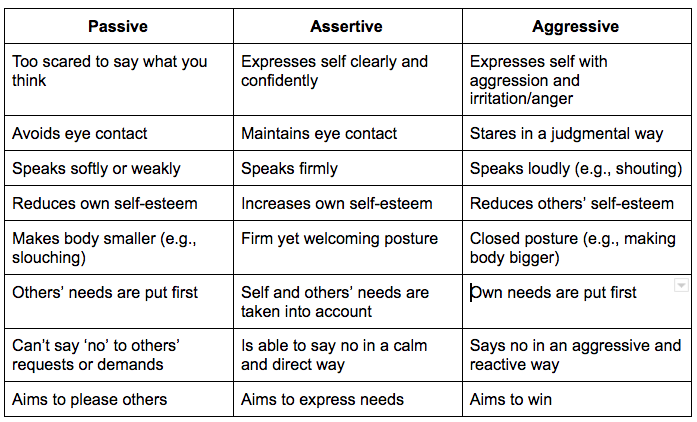Assertive Communication: Definition, Examples, & TechniquesBy Arasteh Gatchpazian, M.A., Ph.D. Candidate
Reviewed by Tchiki Davis, MA, PhD Whether you’re communicating in the workspace or with friends and family, assertiveness is an important element of communication across many domains. Here, you'll learn all about assertive communication.
*This page may include affiliate links; that means we earn from qualifying purchases of products.
Have you ever struggled to get your point across in a clear but non-aggressive way? Or, do you have a hard time communicating your needs? Assertive communication can be a useful tool for helping us balance our relationships with getting our own needs met. In this article, we'll talk about passive communication versus aggressive communication versus assertive communication and help you learn how to communicate more assertively.
Before we get started, we thought you might also be interested in taking our well-being quiz to get your free personalized report. Or, if you're a well-being entrepreneur or coach, download our Wellness Business Growth eBook to get expert tips, tools, and resources to grow your business fast. Are You a Therapist, Coach, or Wellness Entrepreneur?
Grab Our Free eBook to Learn How to
|
Are You a Therapist, Coach, or Wellness Entrepreneur?
Grab Our Free eBook to Learn How to Grow Your Wellness Business Fast!
|
Terms, Privacy & Affiliate Disclosure | Contact | FAQs
* The Berkeley Well-Being Institute. LLC is not affiliated with UC Berkeley.
Copyright © 2024, The Berkeley Well-Being Institute, LLC
* The Berkeley Well-Being Institute. LLC is not affiliated with UC Berkeley.
Copyright © 2024, The Berkeley Well-Being Institute, LLC




